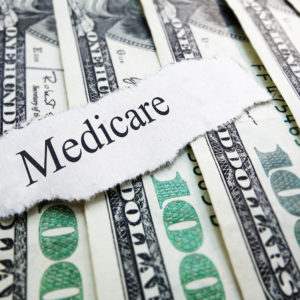In the last 15 years, Medicare’s Part D prescription-drug benefit has become one of the few federal programs most seniors could not live without.
Congress enacted Medicare Part D 15 years after a rancorous political fight in which Republicans and Democrats both made dire predictions about how it would bankrupt our health care system. In the decade-and-a-half since, those fears have proved to be unfounded. Instead, since its inception, Part D has exceeded even the most optimistic projections.
Forty-two million Americans depend on the program to make their prescription drugs more affordable. The program is set up in a way to give Medicare beneficiaries the flexibility they need to choose a plan that meets their needs at the best possible price. That competition has forced plan providers to deliver excellent coverage at mostly affordable prices.
Perhaps the biggest surprise for the early critics of Part D is that the program has actually tamed costs, not sent them skyrocketing. Earlier this year, the Center for Medicare and Medicaid Services projected the average cost of Part D plans will fall for the second year in a row. The decline is even more impressive because other health insurance premiums are rising.
All these attributes help explain why Part D is wildly popular. A poll taken earlier this year found more than 80 percent of the people on Part D are satisfied with the drug coverage. The survey of 2,000 seniors also revealed a widespread belief that the plans are convenient and provide patients with a good value. There are not many federal programs that receive marks like this.
Despite these sterling reviews, there is a glitch in the program that drives out-of-pocket costs much higher for the patients who fall into the so-called “Donut Hole,” a coverage gap that exists for seniors whose drug spending exceeds the threshold for basic coverage but falls short of the threshold at which catastrophic care kicks in. The Donut Hole remains a major flaw in a system that could ensnare an increasing number of seniors.
Congress tried to temper the effect of the Donut Hole as part of the Affordable Care Act. The law reduced the share of Medicare patients who fell into this trap by essentially making it easier to qualify for catastrophic care. But the measure is set to expire at the end of 2019, exposing far more seniors to a dangerous spike in out-of-pocket drug costs. This spike has become known as the “Medicare Cliff,” and Congress needs to step in to prevent millions of Medicare beneficiaries from going over it.
Additionally, the administration outlined a number of reforms earlier this year to address drug costs. Two, in particular, would significantly improve Part D plans for seniors: The first would cap annual out-of-pocket costs for patients, a reform that would benefit seniors with the most serious or chronic illnesses, and the second would require plan sponsors to pass a greater share of the rebates they negotiate along to their subscribers.
There are other steps Congress and the administration could take to improve the program by making medicine more affordable and out-of-pocket payments more predictable. Annual out-of-pocket costs for Part D beneficiaries could be capped, shielding more patients from a coverage gap in the program and ensuring they receive a greater share of the rebates plan providers negotiate with manufacturers.
Targeted reforms could strengthen the program by making medicine more affordable and out-of-pocket payments more predictable for seniors who face fluctuating costs at the pharmacy.
Medicare Part D offers seniors unrivaled value, at a far lower cost to the government than the Congressional Budget Office or Board of Trustees initially projected. But these reforms would make prescription drugs even more affordable for the seniors who need them. And these changes would strengthen the program for the next 15 years

